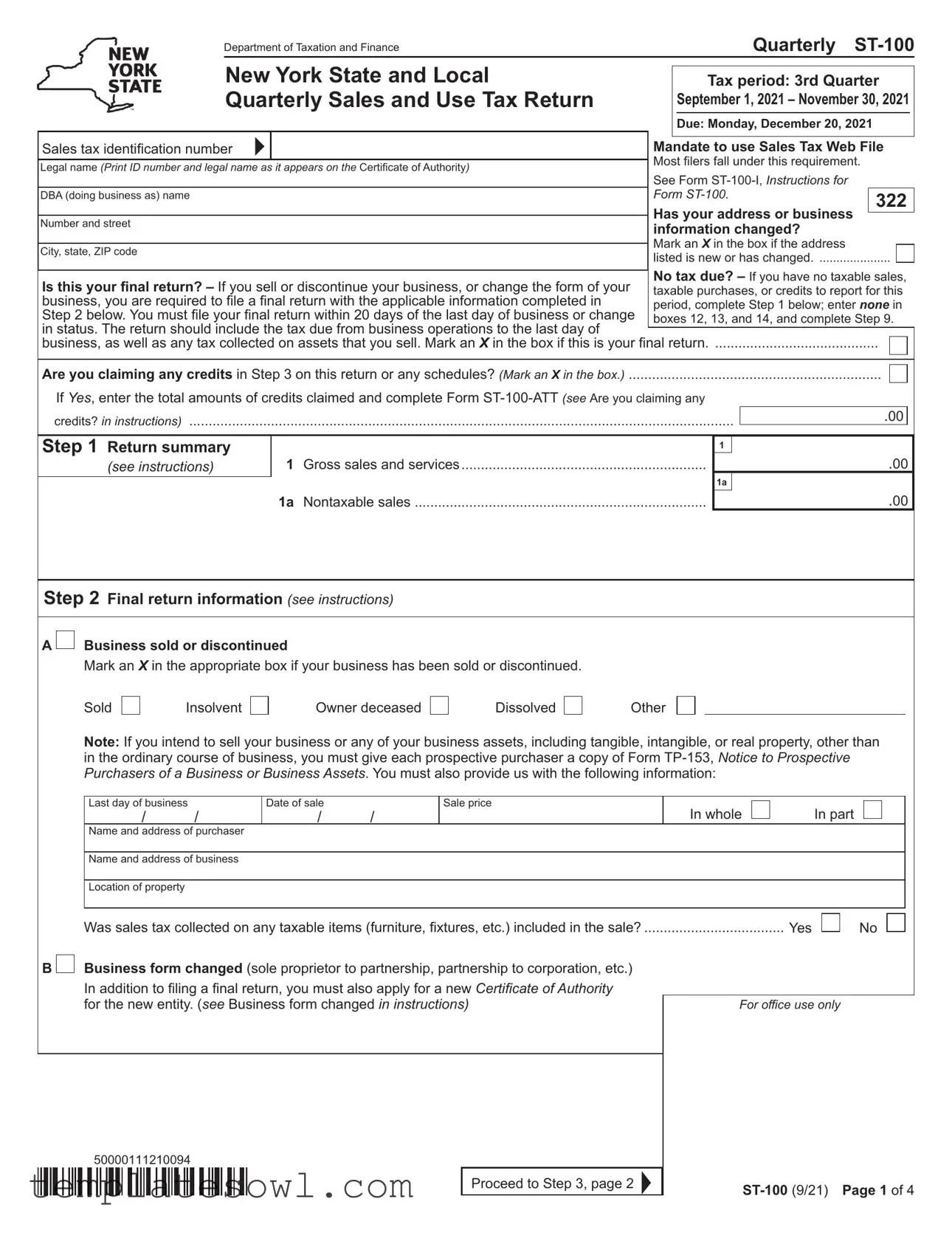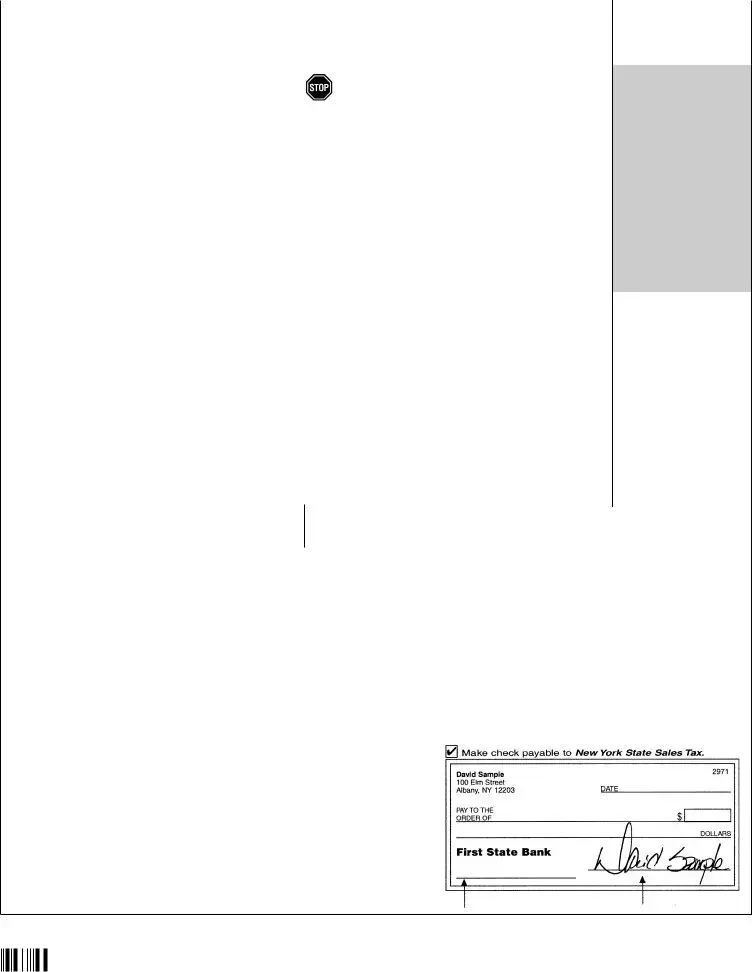Filling out the Tax ST-100 form can be a daunting process, and mistakes are not uncommon. One of the most frequent errors is failing to update address information. If your business address has changed, it is crucial to mark the box to indicate this change. Neglecting to do so can lead to important communications not reaching you, potentially resulting in penalties.
Another common mistake involves not checking whether the form is indeed a final return. It’s important to indicate if this is the last return you will be submitting for your business. If you are selling or discontinuing your business, or if there has been a change in the structure of your entity, this must be clearly marked to avoid further complications later.
Many filers often forget to claim eligible credits in Step 3. If you have any applicable credits, ensure you check the box and complete the relevant sections. Failing to do this means leaving money on the table—an outcome every business would want to avoid.
Additionally, incorrect calculations in your sales and use tax can occur if one does not pay close attention to the tax rates applicable to the jurisdiction in which you do business. It is essential to verify that you are using the correct rate for each taxing jurisdiction. A simple miscalculation can lead to underpayment or overpayment, both of which can have financial repercussions.
Another misstep people frequently make is not ensuring that their identification number is accurate. This number should align with what is stated on your Certificate of Authority. An incorrect number could delay processing and lead to additional inquiries from the tax department.
When filling out the section for sales and services, it's easy to misstate or misinterpret figures. Always double-check your gross sales and nontaxable sales to ensure accuracy. Rounding errors or incorrect entries may result in significant issues later on.
On occasion, individuals overlook the requirement to sign the form. Even if all the figures are correct, failing to provide a signature renders the form invalid and can jeopardize your filing status. Ensure that it is signed and dated before submission.
Finally, keeping a copy of the completed return for your own records is often neglected. This is not merely a good practice; it is essential. Having documentation can prove vital in the event of disputes or audits. Always retain a copy of your submission for future reference.



 Business sold or discontinued
Business sold or discontinued



